MASLD vs MetALD With Tessa Janovsky
Chat with MASLD AI

Hi, I am MASLD AI.
Suggested Questions :

MASLD AI 08:25 PM

Tessa Janovsky, PA-C, Arizona Liver Health, delivers a clear, case-based overview of metabolic dysfunction–associated steatotic liver disease (MASLD), MASH, and mixed-etiology MET-ALD. Using a common clinic scenario, she explains how to recognize fatty liver on imaging, why an accurate alcohol history matters, and how non-invasive tools (FibroScan stiffness/CAP and alcohol biomarkers like PEth) guide staging and care. You’ll learn practical, patient-friendly steps—Mediterranean-style nutrition, sustainable weight loss, regular aerobic and resistance exercise, and alcohol cessation—plus when to consider medications, specialist referral, and ongoing surveillance to prevent progression to advanced fibrosis and cirrhosis. Ideal for APPs and GI clinicians seeking straightforward strategies to manage MASLD/MASH in everyday practice.
Related Podcast
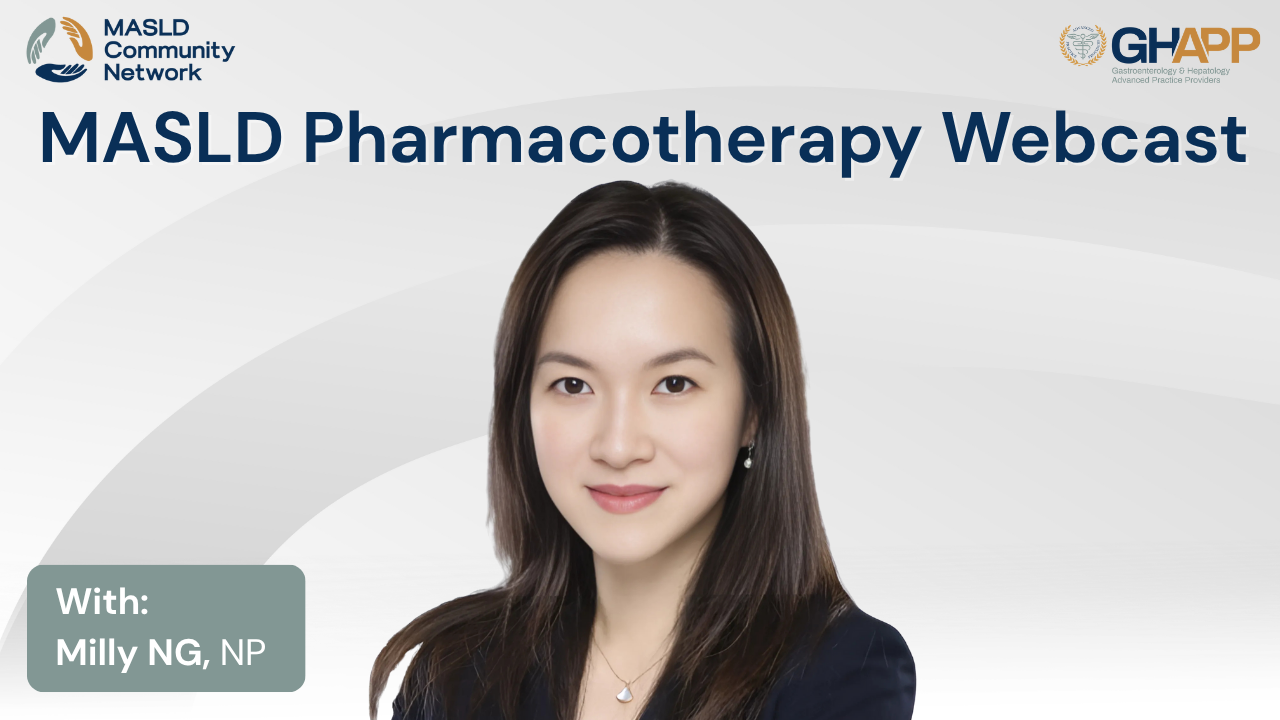
MASLD Pharmacotherapy With Milly Ng

Pharmacotherapy for MASLD is rapidly evolving, and clinicians now have more tools than ever to guide treatment decisions. In this session, Milly Ng, NP at Tufts Medical Center in Boston, breaks down a practical framework for when to initiate treatment, how to select the right therapy, and what monitoring strategies to use. From lifestyle modification and statins to GLP-1 receptor agonists and the first FDA-approved liver-directed therapy, resmetirom, this discussion highlights both established and emerging options. You’ll also learn how GLP-1s can support weight loss and liver health, the evidence behind vitamin E and pioglitazone, and the pivotal Maestro NASH trial that secured accelerated approval for resmetirom. Whether you’re managing patients with obesity, diabetes, or advanced fibrosis, this overview offers actionable strategies to simplify complex decisions and improve outcomes in MASLD/MASH care.
Watch Now
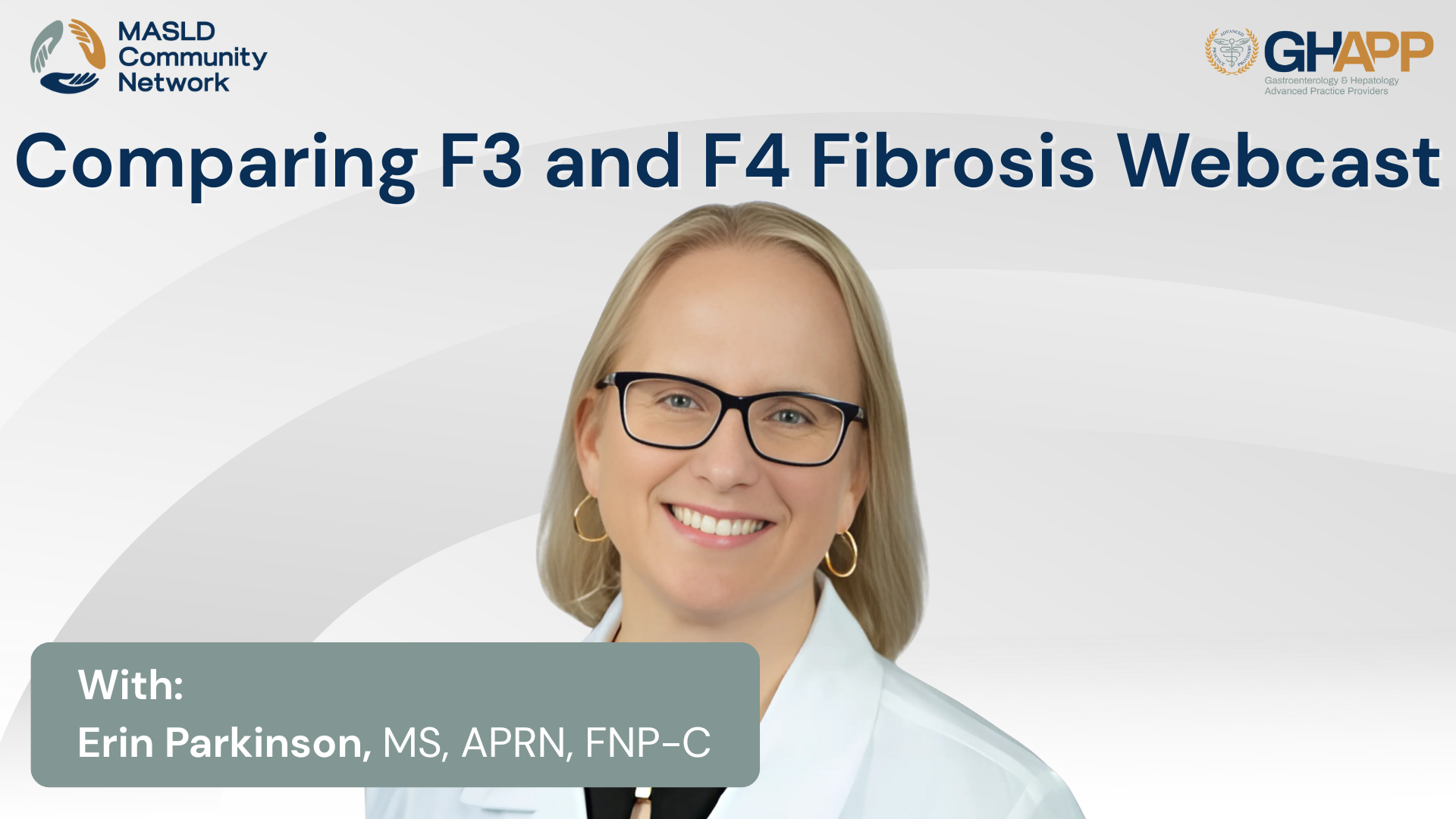
Comparing F3 and F4 Fibrosis With Erin Parkinson

In this in-depth clinical discussion, Erin Parkinson, NP from the Tampa General Medical Group Transplant Institute, walks through the nuanced process of differentiating stage 3 and stage 4 fibrosis in patients with MASLD (Metabolic Dysfunction-Associated Steatotic Liver Disease). Using two illustrative case studies, she explores key clinical signs, lab values, and non-invasive staging tools such as FibroScan, FIB-4, ELF score, and MR elastography. Parkinson discusses the importance of early identification of advanced fibrosis, the reversibility of stage 3 disease, and the implications of a diagnosis of cirrhosis. Erin outlines evidence-based treatment pathways including lifestyle interventions, use of GLP-1 receptor agonists, and initiation of resmetirom (Rezdiffra) for stage 2–3 fibrosis. For cirrhotic patients, the focus shifts to HCC surveillance, screening for clinically significant portal hypertension, and consideration of non-selective beta blockers like carvedilol. This video offers practical insights for hepatology providers navigating the evolving MASLD landscape and highlights how early intervention and accurate staging can impact long-term outcomes.
Watch Now
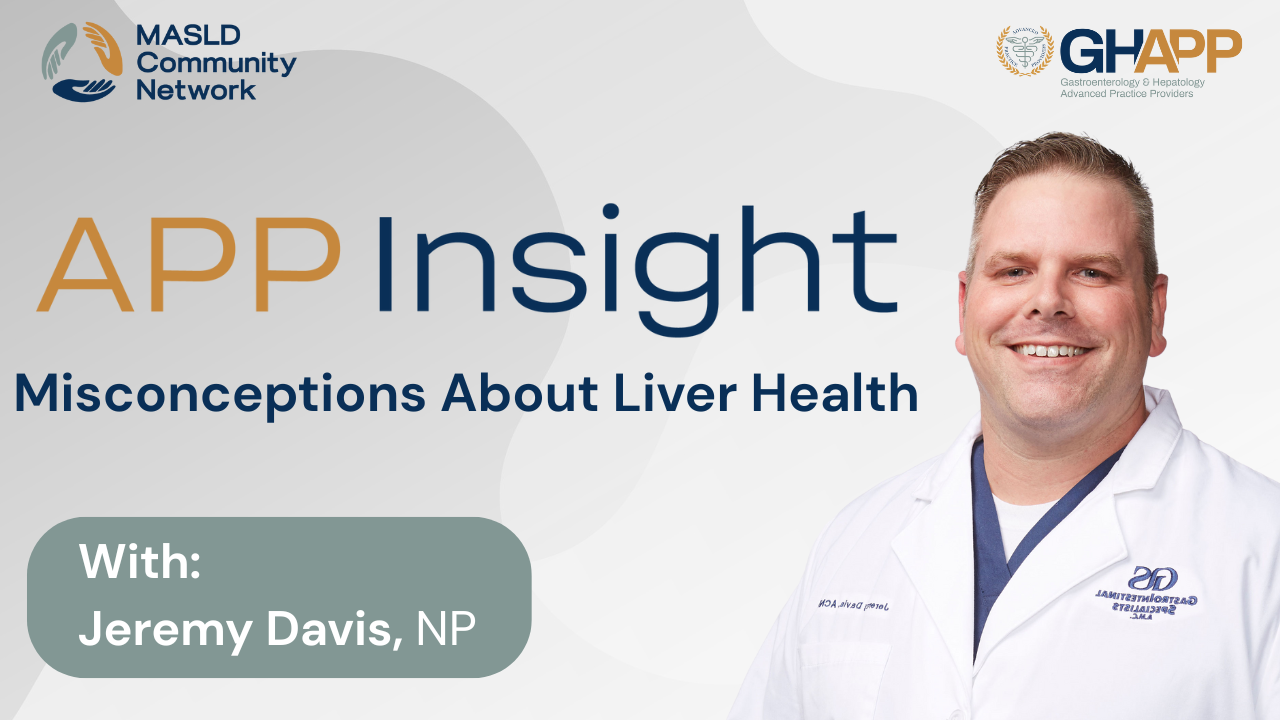
Misconceptions About Liver Health

In this quick but powerful video, Jeremy Davis, NP from Shreveport, Louisiana, addresses some of the most common misconceptions about liver health that he encounters in clinical practice. Many patients believe that liver disease only occurs in people who drink alcohol, but Jeremy explains how conditions like MASLD (Metabolic dysfunction-associated steatotic liver disease) and MASH (Metabolic-associated steatohepatitis) can affect individuals regardless of alcohol use. He also clears up the myth that only overweight patients are at risk, pointing out that co-morbidities such as hypertension, high cholesterol, cardiovascular disease, and type 2 diabetes can contribute to liver disease—even in patients with a normal BMI. Finally, Jeremy explains why normal liver enzyme labs (ALT and AST) don’t always rule out liver disease, making it crucial to assess underlying risk factors and improve provider and patient awareness. This video is a valuable resource for both healthcare professionals and patients looking to better understand non-alcoholic liver disease and why early screening matters.
Watch Now
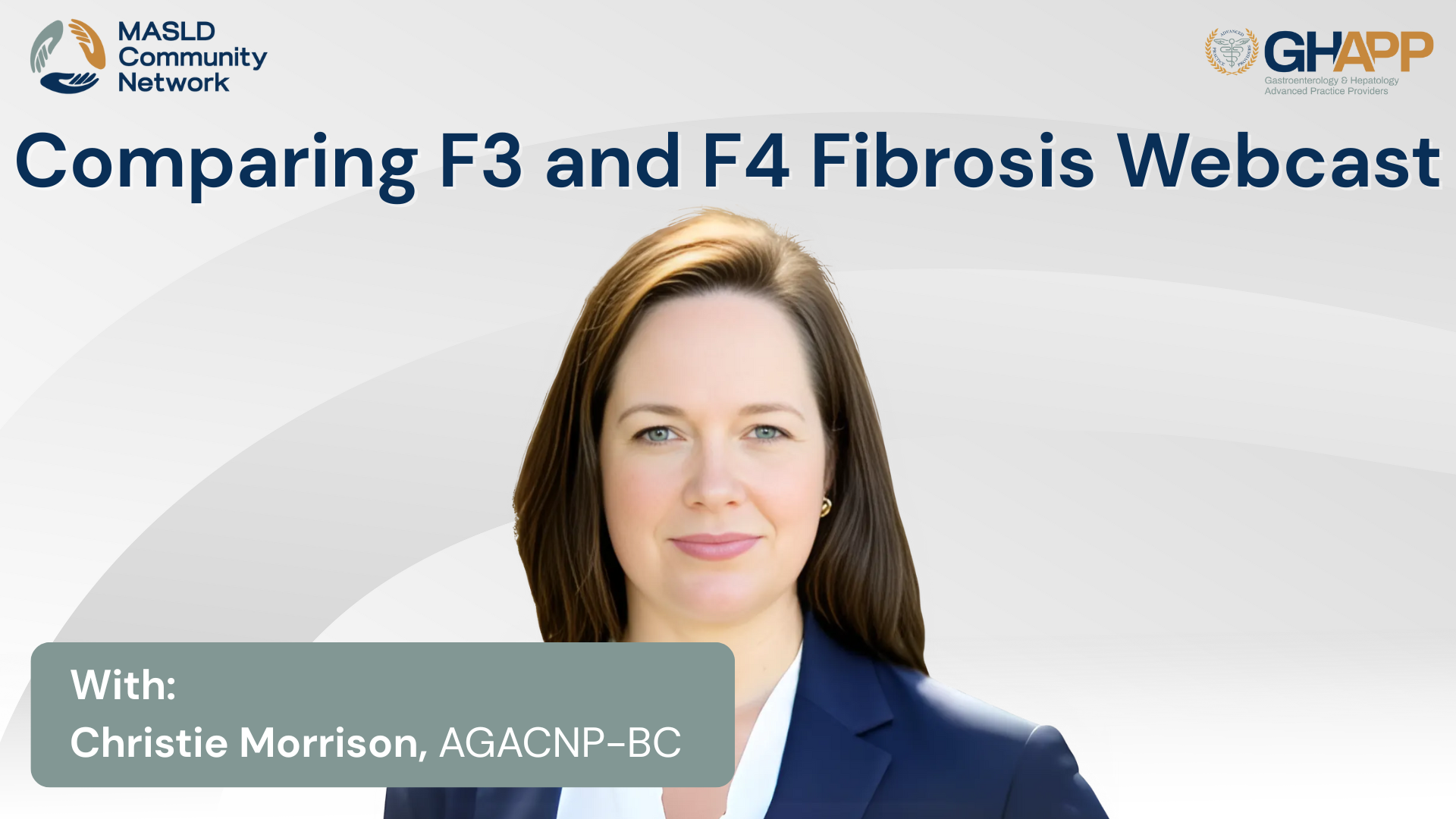
Comparing F3 and F4 Fibrosis With Christie Morrison

In this expert-led session, Christie Morrison, NP, shares a comprehensive case-based discussion on comparing F3 vs F4 fibrosis in patients with MASH (Metabolic Dysfunction-Associated Steatohepatitis). Through the lens of two real-world clinical scenarios, Christie breaks down the nuanced differences in non-invasive diagnostic tools such as FIB-4, ELF scores, and FibroScan KPA readings, while guiding providers on how to stratify risk, monitor disease progression, and tailor interventions appropriately. Viewers will learn how elevated liver enzymes, declining platelet counts, and steatosis scores influence decision-making in patients with metabolic comorbidities like type 2 diabetes, hypertension, and hyperlipidemia. The session emphasizes evidence-based lifestyle and pharmacologic strategies, including the potential role of resmetirom (Rezdiffra) in F3 fibrosis and why it’s contraindicated in advanced cirrhosis. Learn when to initiate HCC surveillance, how to interpret borderline labs, and the importance of integrating GLP-1s, dietitian referrals, and cardiometabolic care to slow or reverse fibrosis progression. Whether you’re managing intermediate or advanced fibrosis, this educational session provides invaluable insights into optimal MASH care pathways and staging techniques.
Watch Now
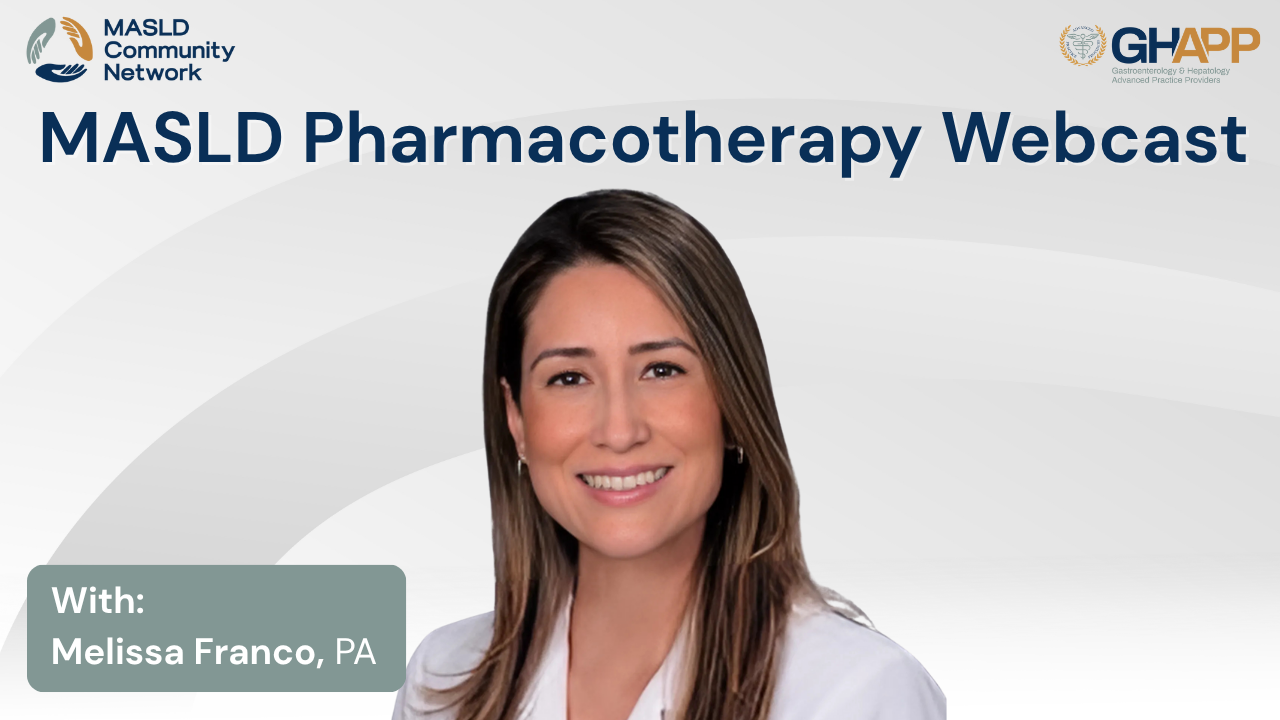
MASLD Pharmacotherapy With Melissa Franco

In this session from the MASLD Community Network, Melissa Franco, PA from the University of Miami, provides a comprehensive overview of pharmacotherapy for MASLD and MASH. She reviews the role of lifestyle interventions such as the Mediterranean diet, weight loss, and exercise while highlighting the importance of controlling metabolic and cardiovascular risk factors including diabetes, hypertension, and dyslipidemia. Melissa discusses pharmacologic options including GLP-1 receptor agonists like semaglutide, which have shown promise in improving both weight loss and liver histology, as well as the evolving roles of vitamin E, pioglitazone, and resmetirom (Rezdiffra)—the first FDA-approved therapy for non-cirrhotic MASH with stage 2–3 fibrosis. Practical considerations, safety profiles, drug-drug interactions, and monitoring strategies are explained, giving clinicians a clear framework for managing patients with fatty liver disease. This session emphasizes why a combination of lifestyle changes, risk factor control, and emerging pharmacologic therapies are critical for improving outcomes in MASLD and MASH.
Watch Now
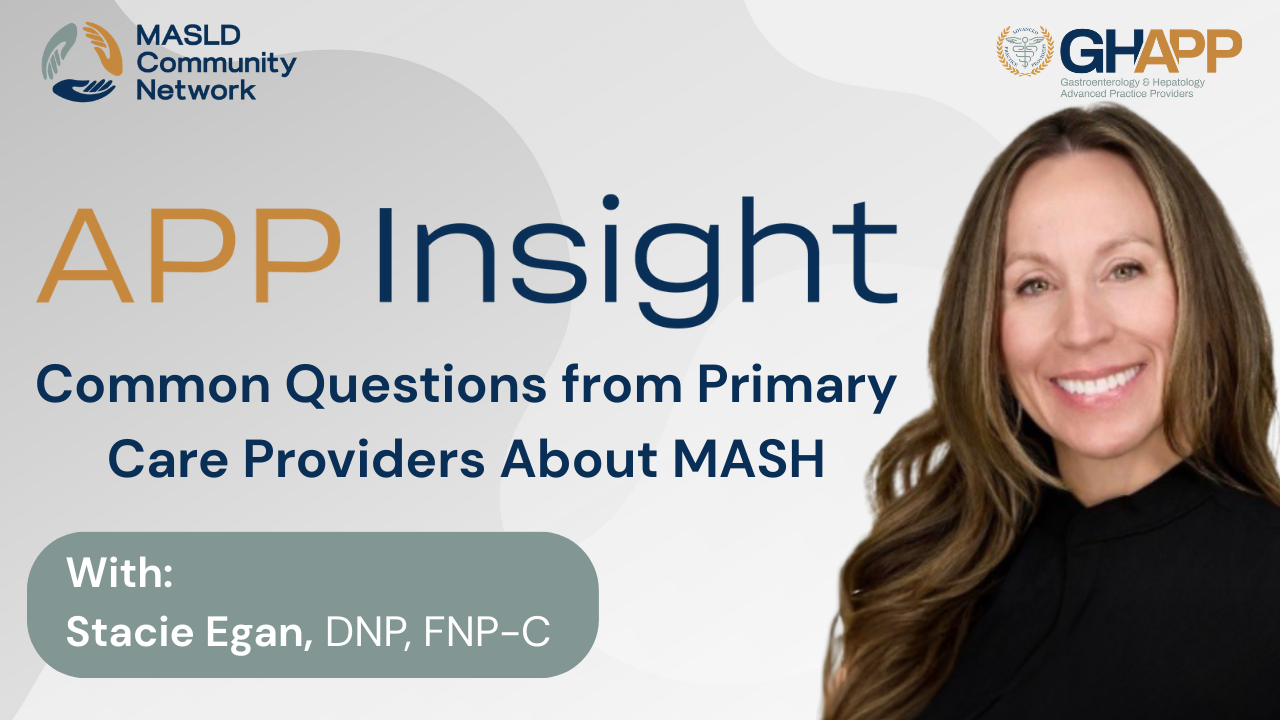
Common Questions From Primary Care Providers About MASH With Stacie Egan

In this educational session, Stacie Egan, DNP at Ogden Clinic GI in Ogden, Utah, shares practical insights on managing patients with MASH and fibrosis in clinical practice. Drawing from her experience treating patients with F2–F3 fibrosis, Stacy highlights the effectiveness of emerging pharmacotherapies and the positive outcomes she has seen in her patients. She emphasizes the critical role of primary care providers as gatekeepers in identifying at-risk patients, particularly those with metabolic syndrome, type 2 diabetes, obesity, hypertension, or hyperlipidemia. By utilizing simple tools like the FIB-4 score, primary care teams can begin the process of risk stratification and ensure that patients receive timely referrals for additional testing such as FibroScan, MRE, or liver biopsy. Stacie also discusses the importance of distinguishing between low, indeterminate, and high-risk patients, ensuring that those with advanced fibrosis (F2, F3, and F4) receive appropriate treatment, monitoring, and, when needed, referral to hepatology for transplant evaluation. This video serves as an important resource for providers across specialties, reinforcing the need for collaboration to detect and treat MASH with fibrosis early, improve patient outcomes, and help reverse steatosis and fibrosis.
Watch Now

Common Questions From Community GI About MASH

In this MASLD Community Network episode, Valerie Shin, NP with UCLA Health Hepatology, addresses frequently asked questions from community GI providers about noninvasive tests (NITs) for assessing steatosis and fibrosis in MASLD and MASH. She reviews the benefits and key limitations of the FIB-4 score—highlighting the risk of false negatives in patients with normal AST/ALT levels, false positives in older patients, and inaccuracy when thrombocytopenia is unrelated to liver disease. Valerie explains when to consider second-line NITs, including transient elastography (FibroScan®), ELF score, and MR elastography, detailing their strengths, availability challenges, and technical limitations such as operator dependence, BMI restrictions, and insurance coverage issues. She also clarifies the rare but important role of liver biopsy when NITs produce conflicting or inconclusive results. Whether you’re a healthcare provider seeking practical diagnostic guidance or a patient wanting to understand your testing options, this video offers expert insights into selecting and interpreting noninvasive liver tests for MASLD and MASH.
Watch Now
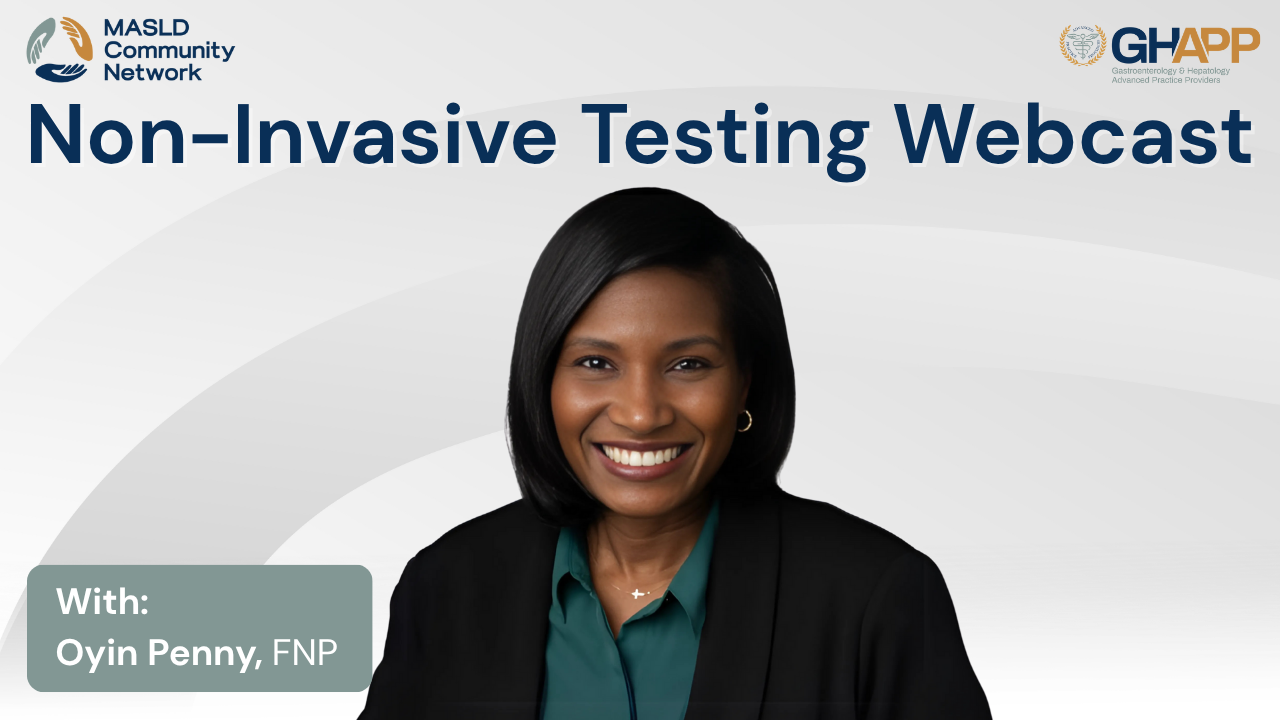
Non-Invasive Testing With Oyin Penny

In this GHAPP MASLD Community Network presentation, Oyin Penny, FNP, from Premier Gastroenterology of Kansas City, explores the evolving role of non-invasive testing (NITs) in assessing MASLD (Metabolic Associated Steatotic Liver Disease) and MASH (Metabolic Associated Steatohepatitis). Through a detailed case study of a 65-year-old male with obesity, diabetes, hypertension, and hyperlipidemia, we review how imaging biomarkers such as FibroScan, MR Elastography, CAP score, and MRI-PDFF, as well as clinical prediction tools like FIB-4 and ELF score, are applied to evaluate fibrosis risk and guide management decisions. This session highlights the strengths and limitations of various NITs, emphasizes the importance of accurate fibrosis staging, and outlines when to repeat testing, escalate to hepatology referral, or initiate therapy. The discussion underscores the critical need for early detection, risk stratification, and proactive management of liver disease in patients with metabolic risk factors to prevent progression to cirrhosis and improve long-term outcomes.
Watch Now
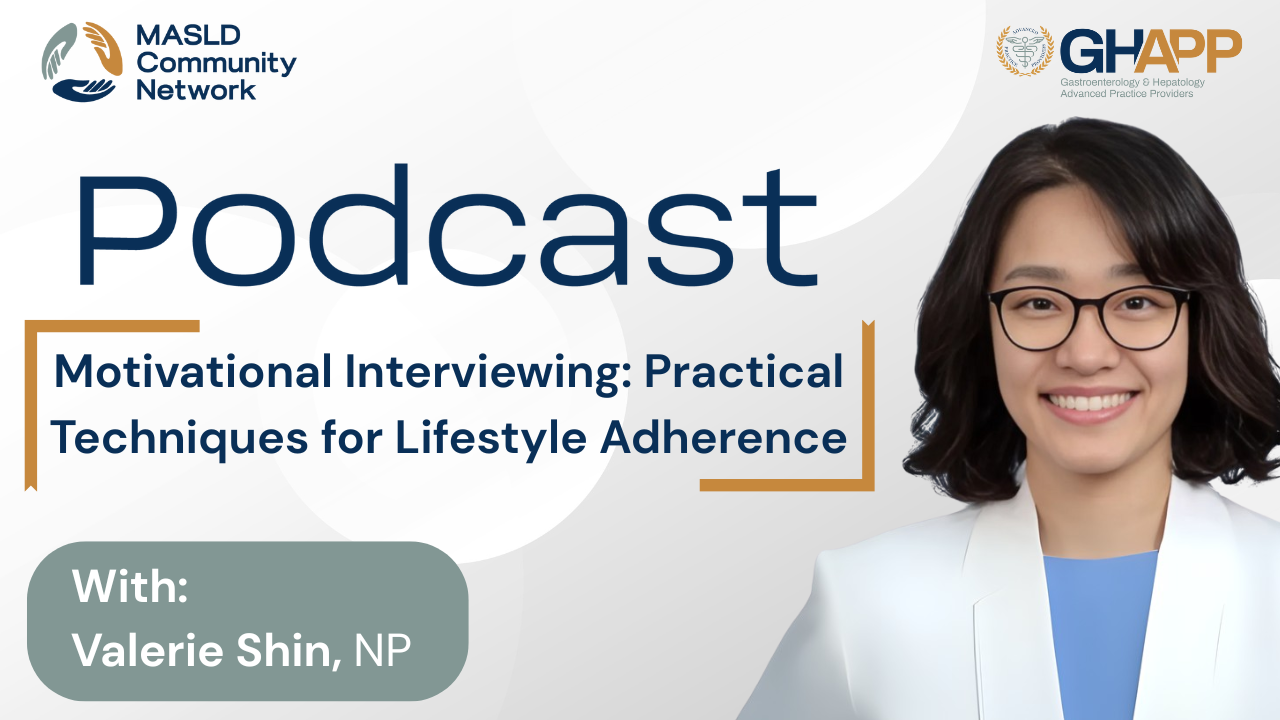
Motivational Interviewing: Practical Techniques for Lifestyle Adherence

Discover how motivational interviewing can transform the management of Metabolic Dysfunction-Associated Steatotic Liver Disease (MASLD) by empowering patients to make sustainable lifestyle changes. In this session, we explore why lifestyle modification—particularly achieving 5–10% weight loss—is the most effective intervention for MASLD, yet often fails when approached through traditional “diet and exercise” advice alone. Learn the four core principles of motivational interviewing—expressing empathy, developing discrepancy, rolling with resistance, and supporting self-efficacy—and how to apply them in real-world clinical encounters to improve patient engagement and outcomes. Through practical strategies, sample dialogue, and a compelling patient case study, this discussion highlights how small, achievable changes in diet and physical activity can reduce hepatic inflammation, improve insulin resistance, and even reverse fibrosis. Whether you’re a hepatology provider, primary care clinician, or allied health professional, you’ll gain actionable tools to activate patient motivation, overcome barriers, and support lasting behavioral change in MASLD care.
Watch Now
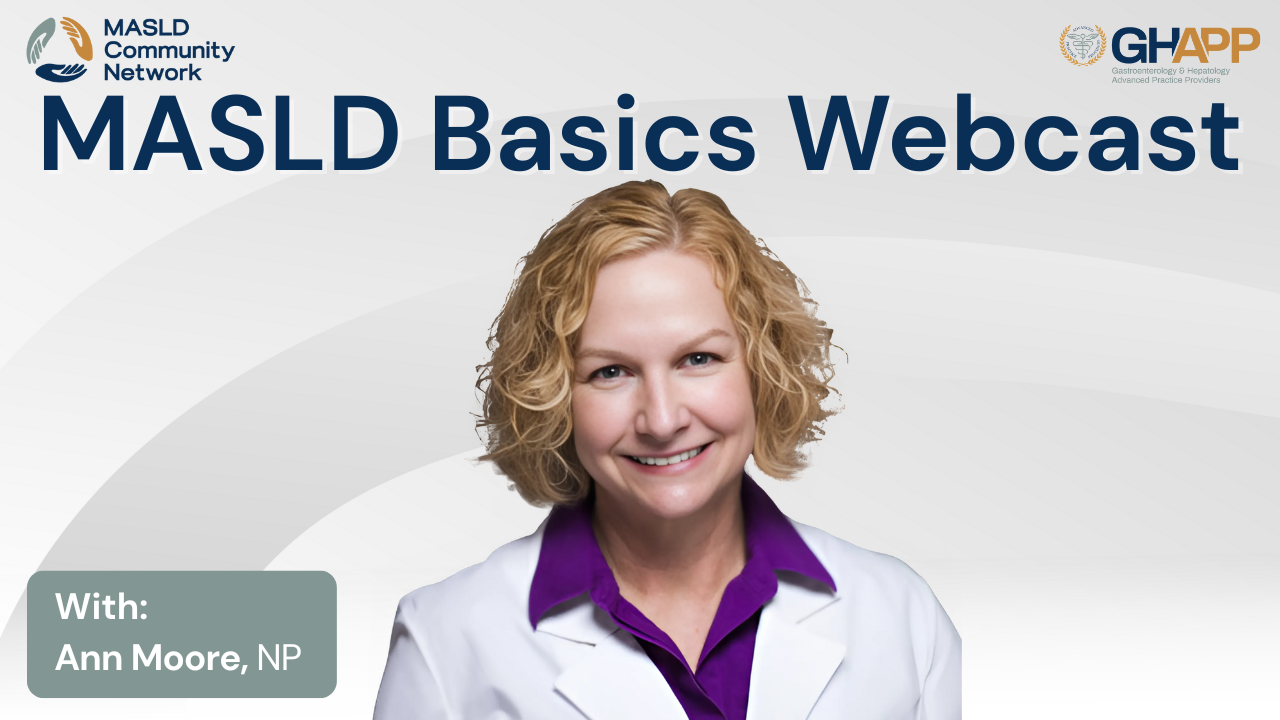
MASLD Basics With Ann Moore

In this episode of MASLD Basics, Ann Moore, NP with Arizona Liver Health, explains the new terminology and approach to what was once called fatty liver disease. She breaks down how “NAFLD” is being replaced with steatotic liver disease and how patients are now categorized based on underlying drivers such as metabolic dysfunction, alcohol use, or other conditions. Ann highlights why MASLD and MASH are the most common and important to recognize, what risk factors providers should look for, and why early detection matters. She also discusses how primary care teams can use simple non-invasive tests, lifestyle changes, and new treatment options to identify at-risk patients before fibrosis and cirrhosis develop. This talk is designed to give APPs, clinicians, and healthcare providers a clear, practical overview of the evolving landscape of liver disease care.
Watch Now





 September 2025
September 2025 